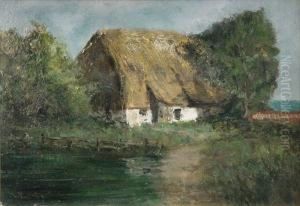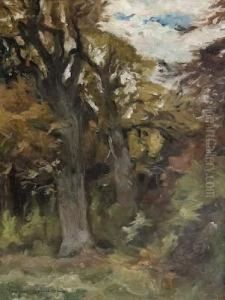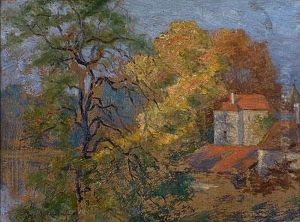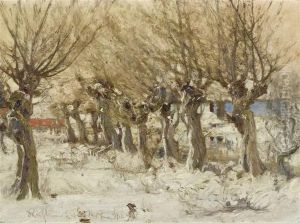Hugo Richter-Levensdorf Paintings
Hugo Richter-Levensdorf was an Austrian painter known for his portraits and landscapes, as well as his involvement in the artistic community of Vienna in the early 20th century. Born on June 18, 1884, in Lvov, which was then part of the Austro-Hungarian Empire and is now in Ukraine, Richter-Levensdorf grew up in a time of significant artistic and cultural change.
He studied at the Vienna Academy of Fine Arts, where he was influenced by the Secessionist movement, a group that sought to break away from the traditional academic art of the time. The movement was characterized by a focus on individual expression and often featured decorative and symbolic elements. Although he was associated with this movement, Richter-Levensdorf's work retained a classical sensibility, particularly in his portraits, which are known for their psychological depth and sensitivity to the character of the sitter.
Richter-Levensdorf served in World War I, an experience that affected him deeply and occasionally influenced his artistic output. After the war, he returned to Vienna and continued to develop his career as an artist. He produced a significant body of work, including portraits of many notable figures of his time, and participated in numerous exhibitions.
Tragically, Richter-Levensdorf's life and career were cut short by the events of World War II. Being of Jewish descent, he was targeted by the Nazi regime. Despite attempts to flee, he was deported to the concentration camp at Auschwitz, where he perished in 1944.
Despite the tragic end to his life, Hugo Richter-Levensdorf's art remains a testament to his talent and the vibrant artistic climate of Vienna in the early 20th century. His works are held in private collections and museums, and they continue to be studied and appreciated for their contribution to Austrian art history.



